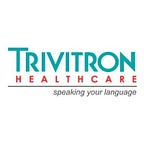Life-Saving Technology: Biphasic Defibrillators vs. Traditional Defibrillators in India
In the realm of emergency medical response, defibrillators stand as crucial devices that can mean the difference between life and death. The evolution of defibrillator technology has significantly enhanced the efficacy of emergency treatments, with biphasic defibrillators emerging as a superior alternative to traditional monophasic defibrillators. In India, where healthcare infrastructure is continuously evolving, understanding the advantages of biphasic defibrillators over traditional ones is vital for improving patient outcomes and saving lives.
Traditional Monophasic Defibrillators
Monophasic defibrillators deliver a single, unidirectional shock to the heart. These devices have been the standard in cardiac resuscitation for decades. The electrical shock from a monophasic defibrillator flows in one direction, requiring higher energy levels to achieve effective defibrillation. Typically, monophasic defibrillators deliver shocks at energy levels up to 360 joules.
While monophasic defibrillators have been life-saving, their high energy levels can cause significant damage to heart tissues. The higher energy requirement also contributes to the bulkiness and reduced portability of these devices. In emergency scenarios, the combination of high energy shocks and the risk of myocardial injury poses a notable challenge.
Biphasic Defibrillators
Biphasic defibrillators represent an advanced technology in the field of cardiac resuscitation. These devices deliver shocks in two phases: the current first flows in one direction and then reverses. This bidirectional flow allows for more efficient defibrillation at lower energy levels, typically between 120 and 200 joules.
The primary advantage of biphasic defibrillators is their increased effectiveness at lower energy levels, which reduces the risk of myocardial damage. Studies have demonstrated that biphasic shocks are more effective in terminating ventricular fibrillation, leading to higher survival rates. Additionally, the reduced energy requirement allows for the design of more compact and portable devices, making biphasic defibrillators ideal for various emergency settings, including ambulances and remote areas.
Biphasic Defibrillators in the Indian Context
India’s healthcare landscape is diverse, with a mix of advanced medical facilities in urban areas and limited access to healthcare in rural regions. The introduction of biphasic defibrillators in India can significantly improve emergency cardiac care across different settings. Given their enhanced efficacy and reduced risk of heart tissue damage, biphasic defibrillators are particularly suitable for the varied medical infrastructure in India.
Trivitron Healthcare: Leading the Way
Trivitron Healthcare, a prominent name in the Indian medical device industry, offers a comprehensive range of defibrillators designed to cater to diverse emergency scenarios. Their offerings include manual defibrillators, automated external defibrillators (AEDs), automated internal defibrillators (AIDs), and portable defibrillators.
1. Manual Defibrillators: Trivitron’s manual defibrillators are designed for scenarios where an AED is unavailable, allowing healthcare professionals to manually analyze and administer shocks.
2. Automated External Defibrillators (AEDs): These devices are user-friendly and ideal for non-medical personnel. Trivitron’s AEDs automatically analyze heart rhythms and deliver shocks when necessary, making them essential for public spaces and first responders.
3. Automated Internal Defibrillators (AIDs): Aimed at medical settings, these defibrillators offer advanced life-saving capabilities by automatically analyzing and treating arrhythmias, ensuring prompt and effective intervention by medical professionals.
4. Portable Defibrillators: Lightweight and easy to use, Trivitron’s portable defibrillators are designed for emergency situations where patients need to be transported. Their portability ensures that life-saving treatment can be administered promptly during transit.
5. Defibrillator Accessories: Trivitron also provides essential accessories, including electrode pads, batteries, and carrying cases, ensuring their devices are always ready for use.
Economic Considerations: Biphasic Defibrillator Price
The cost of medical devices is a critical factor in their adoption, especially in a price-sensitive market like India. The biphasic defibrillator price can be higher than traditional monophasic defibrillators due to their advanced technology and superior effectiveness. However, considering the improved patient outcomes and reduced long-term healthcare costs associated with fewer complications, investing in biphasic defibrillators is economically beneficial.
Conclusion
The choice between biphasic and traditional defibrillators is clear when considering effectiveness, safety, and portability. Biphasic defibrillators, with their bidirectional shock delivery and lower energy requirements, provide a significant advantage in cardiac emergency care. Trivitron Healthcare’s range of defibrillators, including biphasic models, addresses the diverse needs of the Indian healthcare system, from urban hospitals to rural clinics. As India continues to advance its healthcare infrastructure, the adoption of biphasic defibrillators will play a crucial role in enhancing emergency medical response and saving lives.
For those considering the investment, evaluating the defibrillator price in India reveals that while initial costs may be higher, the long-term benefits in terms of improved patient outcomes and reduced healthcare expenditures make biphasic defibrillators a worthy investment in life-saving technology.
